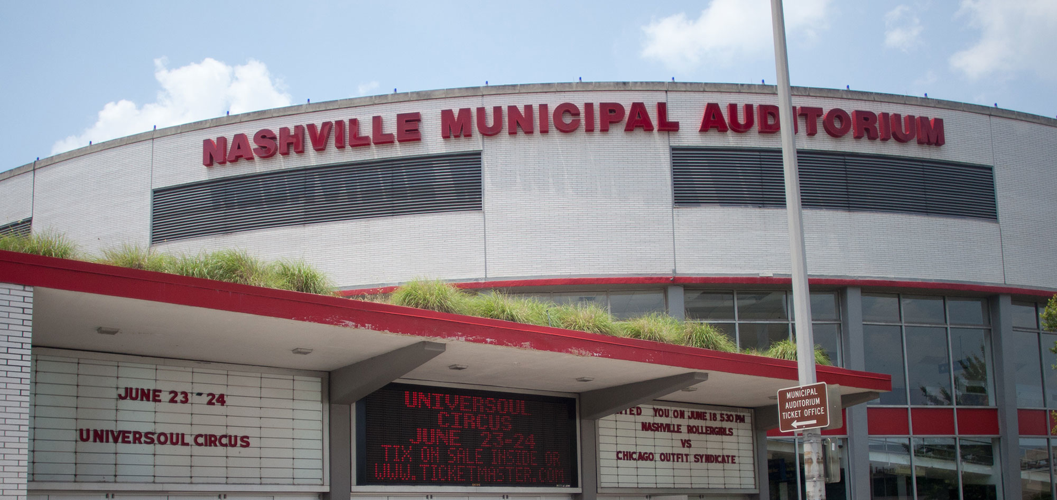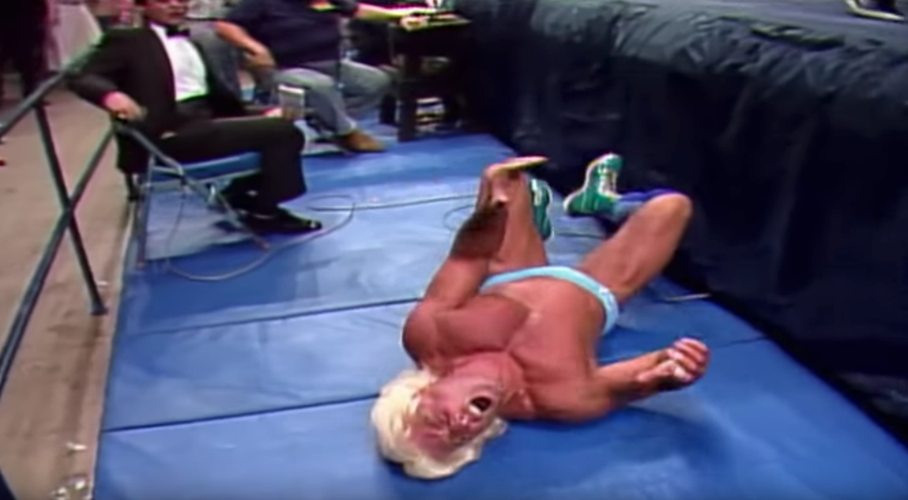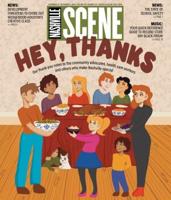
Glitzy 2019 Nashville is in the business of hosting capital-E Events, putting on shows for national audiences and drawing visitors from hither and yon to fill Lower Broadway’s neon canyon. Combine that with recency bias and it’s easy to be googly-eyed and froth about how last week’s NFL Draft is the greatest sporting event in the history of the city.
Those who like their sporting events to be more about competition than about a list of names will point to the trio of Stanley Cup Final games that captured the city’s imagination for a frenzied fortnight. Others will argue the greatest moment came Jan. 8, 2000, when there were no flags on the field as Kevin Dyson miraculously raced to the end zone.
All of these people are wrong, because the greatest moment in Nashville sports history didn’t take place on Lower Broadway, or at Bridgestone Arena or Nissan Stadium. It happened 30 years ago at Municipal Auditorium. Aficionados still speak in reverent tones about what happened on May 7, 1989, at the squat and charmless building on James Robertson, with many arguing that the performance has yet to be surpassed.
It was WrestleWar ’89. The match was the Nature Boy, Ric Flair, against his greatest opponent, Ricky “The Dragon” Steamboat.
Professional wrestling is fine art distilled: the performance of theater, the dexterity of dance, the drama of opera. It has the athleticism of legitimate sport; the fact that the outcomes are predetermined is immaterial. At its best, wrestling is akin to music, with a match carrying the observer on an emotion-evoking journey — and Flair-Steamboat is the finest of symphonies.
Wrestling’s stories are formulaic, as are, after all, symphonies. The formula is part of the appeal, as audiences can anticipate and respond to the expected beats — or enjoy the twist when the beats are manipulated. In wrestling, the basic formula is good guy versus bad guy, fighting over something. In this case, Steamboat is the good guy, or “babyface” in the parlance — in fact, The Dragon is the rare wrestler who never “turned” (changed sides) from a babyface to a heel — and Flair the bad. The duo battled over the National Wrestling Alliance’s World Heavyweight Championship throughout 1989, putting on stunning matches in Chicago and New Orleans. Those matches were both won by Steamboat, though the result of the New Orleans match was held up. Nashville capped the trilogy.
The overarching story was that Steamboat was a wholesome family man, while Flair, as anyone with a scintilla of cultural knowledge and/or an Offset album knows, was the Rolex-wearin’, diamond-ring-wearin’, kiss-stealin’, wheelin’, dealin’, limousine-ridin’, jet-flyin’ son of a gun. When he preened his way to the ring at Municipal with Richard Strauss’ Also Sprach Zarathustra straining the speakers, he was surrounded by what legendary announcer Jim Ross informed us were 40 of the most beautiful women in the city (the top six got to join Naitch in the ring). None of that was germaine to the story. By the time they got to Nashville, it was two great fighters fighting for the top award in their sport. The comparisons about their personal lives were mere trifles.
Truly, the match follows the form of the symphony, opening with an establishing sonata. Understated, methodical — the 21st-century postmodernist fan, used to the short-attention-span matches of the modern WWE, would call it “slow” — the first movement reveals the basic points: the younger, athletic Steamboat wants to work on Flair’s long-injured back (legitimately damaged in a 1975 plane crash) and his arms to set up his chickenwing finisher. Flair will look for openings to attack Steamboat’s legs, minimizing the threat from his opponent’s vicious kicks and setting up his own finisher, the figure-four.

Every orchestra needs its complementary players. Here it’s announcer Ross — he ensures that the home audience is aware of the strategies, but lets the featured artists tell their story without bombastic distractions. Referee Tommy Young becomes an audience surrogate, wincing in sympathetic pain when the men trade chops that send whip-crack echoes around Municipal’s concrete walls.
After a brutal and pugilistic sonata to begin, the match moves to a second movement: the tension-building adagio. The men leave the ring for the first time, and a frustrated Flair loses his sinister sneer, now warped into a bug-eyed look of animalistic bloodlust as he grabs — though never gets to use — the Chekhov’s pistol of wrestling: the steel chair. Steamboat has a chance to win the match, but Flair — with the audience and Steamboat both on the end of a string — dodges The Dragon’s crossbody leap. Ross’ brilliant description of Steamboat as having “nothing between him and the mat but imagination” sends us to the frenzied third movement: the scherzo.
It’s a frenetic back-and-forth of suplexes and counters and dives to the outside. Steamboat appears to have Flair beaten, locking in the chickenwing after a fortissimo suplex. But Flair reaches the ropes, arm outstretched like a drowning man seeking rescue from a passing ship. And Steamboat, after seemingly exhausting all his other options, climbs the ropes. But Flair — beaten but not defeated — subtly jiggles the rope, sending the Dragon plummeting to the floor. The final movement begins, paying off what the rest of the performance promised.
Flair, the platinum-haired shark, smells blood, working over Steamboat’s injured leg and locking in the figure four. But Steamboat reaches the ropes, prompting a brilliant contrapuntal duet — the men raining punches on each other even as Flair maintains a hold on Steamboat’s ankle, the pair entwined as if in some kind of profane dance. An anguished kick from The Dragon breaks the men apart, and Steamboat lifts Flair in a suplex. But his injured leg can’t bear the Nature Boy’s weight. The fighters collapse to the ground, Flair rolls up his valiant opponent, pinning him to become the champion once again.
So intense was the exhibition that the next day’s Tennessean reported a “six-man, one-woman tag-team match” in a nearby parking lot after the show, sparked by a dispute over whether Flair or Steamboat was the better wrestler. Three were injured, including one who was stabbed, and two were arrested. it was much like the reaction in Paris when Stravinsky debuted The Rite of Spring.
“This was grown people fighting over a staged sporting event,” the paper reported an exasperated police officer as saying.
Some people just don’t understand art.






